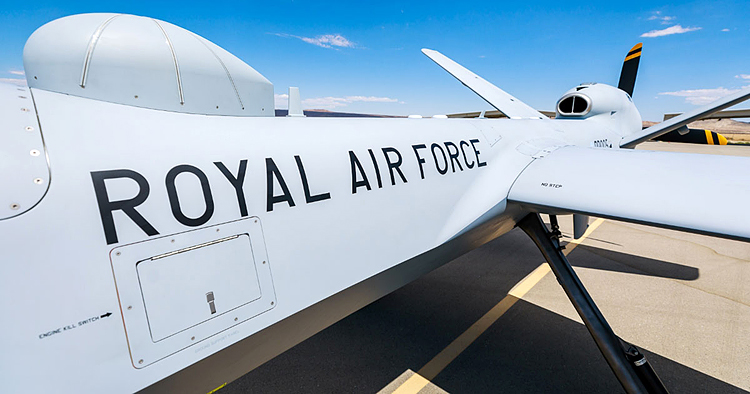INDIAN ARMED FORCES CHIEFS ON
OUR RELENTLESS AND FOCUSED PUBLISHING EFFORTS

SP Guide Publications puts forth a well compiled articulation of issues, pursuits and accomplishments of the Indian Army, over the years

I am confident that SP Guide Publications would continue to inform, inspire and influence.

My compliments to SP Guide Publications for informative and credible reportage on contemporary aerospace issues over the past six decades.
Protector Training for First RAF Cohort Begins at GA-ASI's FTTC
MQ-9B Training at FTTC Will Become Benchmark for Future Training

On May 1, 2023, the Royal Air Force (RAF) began training its first cohort of pilots, sensor operators, and mission intelligence coordinators on operating its new Protector Remotely Piloted Aircraft System (RPAS) at the Flight Test & Training Center (FTTC) in Grand Forks, N.D. The FTTC is owned and operated by General Atomics Aeronautical Systems, Inc. (GA-ASI), which has begun deliveries of Protector RPAS to the RAF. Protector is a derivative of the MQ-9B SkyGuardian® and is initially being flown in the USA for training.
GA-ASI is training the first four Operational Conversion Units (OCUs), each comprising of eight crews, including pilots, sensor operators (SOs), and mission intelligence coordinators (MICs). Upon completion, the crews will operate the Protector Air system as part of 31, 54 or 56 Sqn. Training for the pilots and SOs is scheduled to run for 12 weeks; six weeks for MICs.
The scope of the training is focused on foundational skills required to operate the Protector air vehicle and its equipment, including the Multi-Spectral Targeting System (MTS), Synthetic Aperture Radar (SAR), Mission Intelligence Station (MIS), and System for Tasking and Real-Time Exploitation (STARE). Training involves building solid foundations for both normal and emergency operations in Intelligence, Surveillance, and Reconnaissance (ISR) systems, instrument flying, and Automatic Takeoff and Landing Capability (ATLC).
The training includes simulation and live flight of the air vehicle. The synthetic training includes a desktop procedural trainer and a mission trainer.
“The training services performed at our Grand Forks center for the RAF represent an important benchmark for future MQ-9B training for other partners,” said GA-ASI President David R. Alexander.
MQ-9B has garnered significant interest from customers throughout the world. After the UK Ministry of Defence selected MQ-9B SkyGuardian for its Protector program, the Belgian Ministry of Defence signed a contract for SkyGuardian. The Japan Coast Guard is currently operating MQ-9B in the SeaGuardian® configuration, which the Japan Maritime Self-Defense Force (JMSDF) also recently selected for its Medium-Altitude, Long-Endurance (MALE) RPAS Trial Operation Project that began in April. Additionally, the U.S. Air Force Special Operations Command (AFSOC) signed a contract for three MQ-9B SkyGuardians, becoming the first U.S. customer for those aircraft.





